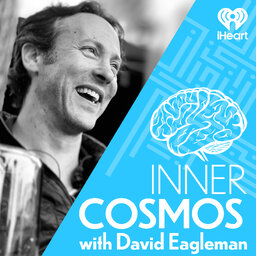Ep33 "Why do they start sprinters with a bang instead of a flash?"
Why do they use a gun at the Olympics? And why can you get off the blocks after the bang but still be disqualified for jumping the gun? Few things are as bizarre as our time perception. From sprinters to basketball players, from Kubla Khan to Oppenheimer, from television broadcasting to hallucinations, Eagleman unmasks illusions of time that surround us. Why does the brain work so hard to pull off editing tricks? And what does this tell us about our perception of reality?
 Inner Cosmos with David Eagleman
Inner Cosmos with David Eagleman


